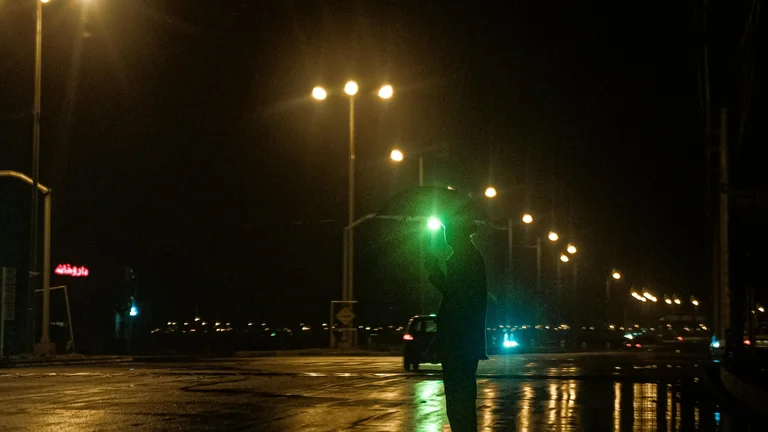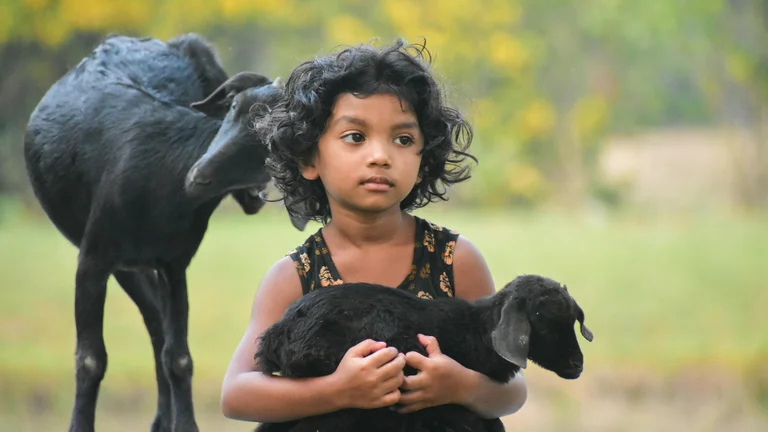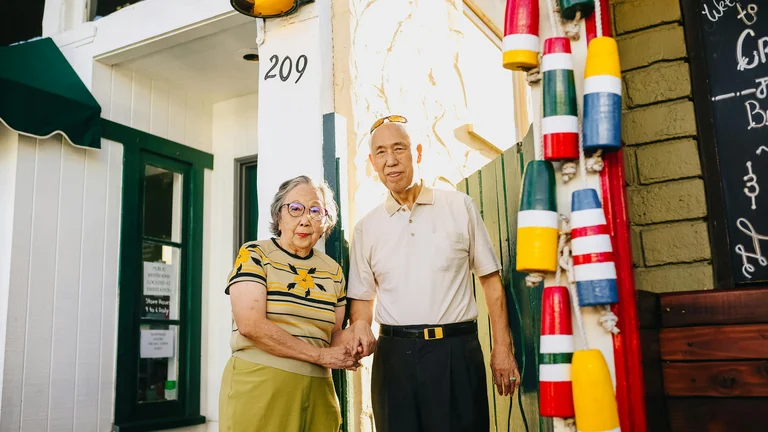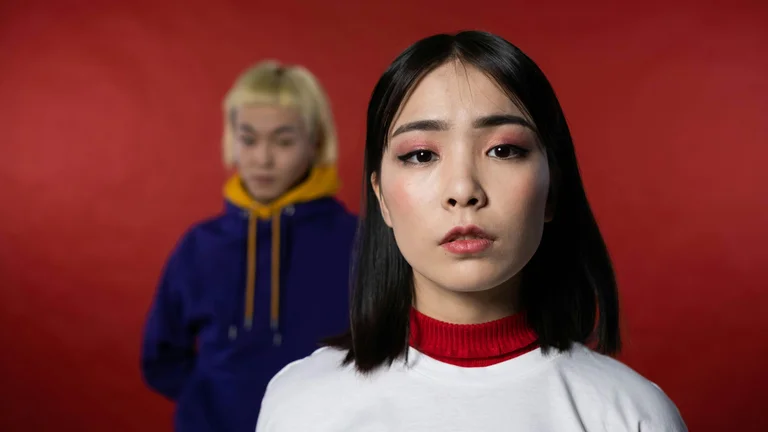
Korean dramas (K-dramas) have become a global cultural phenomenon, captivating audiences worldwide with their compelling narratives, charismatic characters, and atmospheric aesthetics. Among countless memorable tropes and motifs, the "umbrella scene" stands out as an iconic visual and emotional element recurrent in many beloved series. These scenes, often set against the backdrop of rain, utilize the simple umbrella as a symbolic device representing themes such as protection, intimacy, fate, and emotional connection. This article delves deeply into the significance, evolution, and impact of umbrella scenes in Korean dramas, exploring how they enhance storytelling, character development, and audience engagement.
Umbrella scenes occur frequently in romantic plots, where the sharing of an umbrella becomes a silent yet potent gesture of closeness between characters, often marking pivotal moments in relationships. The rain itself adds layers to the scene’s meaning, evoking moods of melancholy, renewal, or passion depending on the context. This article breaks down the role of umbrella scenes into several thematic and cinematic components, illustrating their contribution to narrative techniques and fan culture.
The cultural weight of umbrellas in Korean media cannot be understated. Beyond their practical function, umbrellas often denote shelter and comfort, giving characters a physical and metaphorical space to grow closer amid external adversity, such as inclement weather. Umbrella scenes facilitate non-verbal communication through proxemics—the spatial relationship between characters under a confined space. This limited physical distance amplifies emotional tension and vulnerability, frequently catalyzing romantic or heartfelt dialogue. Analyzing the nuances within these scenes reveals their layered complexity and the deliberate creative choices behind them.
Furthermore, the umbrella as an object becomes a motif linked to destiny and serendipity in K-dramas. Moments when characters unexpectedly find themselves sharing an umbrella situate the narrative in a realm of intertwined fate, suggesting that despite life’s uncertainties, connections will form. This aligns with prevalent themes in Korean storytelling about predetermined relationships and the power of timing.
The Origins and Evolution of Umbrella Scenes in Korean Dramas
The umbrella scene trope traces back to the mid-1990s and early 2000s when Korean dramas began to experiment heavily with visual symbolism as a method of enriching storytelling. Early K-dramas such as "Autumn in My Heart" (2000) and "Winter Sonata" (2002) laid the groundwork for weather-related metaphors, intertwining rain and snow with emotional turmoil and revelation. Sharing an umbrella, or a chance encounter beneath one, quickly became shorthand for impending emotional intimacy.
Initially, these scenes appeared sporadically, but their popularity grew as they resonated strongly with viewers. Subsequently, umbrella scenes evolved from merely romantic setups to more complex interactions involving character vulnerability, conflict resolution, or transformative encounters. Modern K-dramas use these moments not just for romance but as metaphors for healing, reconciliation, and growth.
The evolution also reflects advances in cinematic techniques employed by directors and cinematographers to capture rain sequences in a visually immersive way. Slow-motion shots, atmospheric lighting, naturalistic rain effects, and close-up frames emphasize the tactile sensation of rain and the enclosed space under the umbrella. These visual choices deepen emotional involvement and viewer identification with the characters’ experience.
Notable early examples such as "My Lovely Sam Soon" (2005) and "Secret Garden" (2010) featured umbrella scenes where humour and tension coexisted, demonstrating the versatility of this motif beyond pure romance. The umbrella scene became a reliable storytelling tool capable of adapting to various genres while maintaining its evocative power.
Symbolism of Umbrella Scenes: Emotional and Narrative Significance
The umbrella in K-dramas transcends its mundane utility as a weather shield, emerging as a potent symbol layered with multiple meanings. Fundamentally, the umbrella represents protection — from rain, harsh external forces, or emotional damage. When two characters share an umbrella, they implicitly offer shelter to one another, signaling trust and mutual care.
This sharing can symbolize the first step toward emotional intimacy, where physical closeness signals openness and vulnerability. The limited space beneath an umbrella forces characters into proximity, stimulating tactile and visual cues that generate chemistry and convey unspoken feelings. This physical gesture becomes a narrative shortcut that conveys complex emotional states without lengthy exposition.
Additionally, the umbrella is often associated with fate and serendipity, recurring in scenes where protagonists collide unexpectedly under a rainy sky. Such moments convey that despite barriers and challenges, destiny conspires to bring them together. The umbrella thus acts as a visual metaphor for the fragile but potent bond between characters.
The themes of renewal and cleansing are also tied to rain and umbrella scenes. Rainfall, often representing emotional release, washing away past pain or misunderstandings, combined with the shelter provided by the umbrella, signals hope and new beginnings. These thematic layers are essential to understanding K-dramas’ nuanced approach to romance and personal growth.
Umbrella scenes frequently coincide with turning points in the plot, such as confessions of love, reconciliations after conflict, or moments of revelation. The combination of visual intimacy and thematic significance elevates these sequences, making them memorable and emotionally impactful for viewers.
Key Iconic Umbrella Scenes in Popular K-Dramas
To illustrate the diversity and emotional depth of umbrella scenes, we examine several iconic examples across different popular series. Each of these scenes showcases distinct narrative intentions, directorial styles, and emotional tones.
1. "Crash Landing on You" (2019-2020) – One of the most famous umbrella scenes occurs between the protagonists Yoon Se-ri and Ri Jeong-hyeok. In a moment of vulnerability, Jeong-hyeok walks to Se-ri under the rain with an umbrella, symbolizing his protection over her despite dangerous circumstances. The scene’s cinematography uses warm lighting juxtaposed with cold rain to emphasize emotional warmth amid adversity.
2. "Goblin" (2016-2017) – The rain and umbrella scenes between Kim Shin and Ji Eun-tak are poignant, blending supernatural elements with human emotion. One scene where Eun-tak shares her umbrella with Kim Shin embodies her acceptance of his supernatural identity and their destined connection. The umbrella acts as a private world where their forbidden love flourishes.
3. "Healer" (2014-2015) – The scene featuring the protagonists sharing a large umbrella during a sudden shower serves as a metaphor for mutual reliance despite their secretive lives. The umbrella not only protects them physically from the rain but symbolically shelters their fragile trust from the outside world.
4. "Boys Over Flowers" (2009) – In this classic, the character Goo Jun Pyo offering his umbrella to Geum Jan Di is a seminal moment reflecting his internal transformation and willingness to shield her from hardship. This umbrella scene is frequently referenced among fans as emblematic of grand romantic gestures in K-dramas.
These examples demonstrate how the humble umbrella acts as a canvas that directors use to paint complex emotional scenes, where subtext and atmosphere create a lasting impression. The repeated use across different narratives also shows how the umbrella trope functions as a connective thread in Korean drama storytelling.
Technical Cinematic Elements in Umbrella Scenes
Umbrella scenes are not only emotionally significant but are carefully crafted using various cinematic techniques that enhance their visual and narrative impact. Key elements include lighting, framing, sound design, and camera movement.
Lighting – The lighting in umbrella scenes is crucial to tone setting. Directors often use dim, soft, or backlighting to generate silhouettes and reflections on wet surfaces, intensifying intimacy. The contrast between the bright umbrella interior and rain-darkened exterior creates a cocoon effect, visually distinguishing characters from their surroundings.
Framing and Composition – Close-up shots are utilized to capture facial expressions and the nuanced eye contact between characters, while wide shots emphasize the isolation of the umbrella amidst open, rainy environments. The framing often positions characters shoulder-to-shoulder, highlighting proximity and emotional connection.
Sound Design – The gentle patter of raindrops provides a naturalistic soundscape that complements quiet dialogue or moments of silence, amplifying emotional resonance. The ambient rain sound can also contrast with sudden bursts of music that underscore revelations or confessions beneath the umbrella.
Camera Movement – Slow tracking shots and smooth pans reflect the gradual unfolding of intimacy. Occasionally, dramatic zoom-ins emphasize the umbrella as a physical and emotional focal point, guiding viewer attention to significant exchanges occurring within this confined space.
By integrating these elements, directors create multi-sensory experiences that immerse viewers in the moment, making umbrella scenes not just symbolic but visceral and memorable.
The Role of Umbrella Scenes in Character Development
Umbrella scenes often act as catalysts in character arcs, providing space for introspection, emotional breakthroughs, or shifts in relationship dynamics. The intimacy fostered by sharing an umbrella encourages expressions of vulnerability that might not occur otherwise.
For protagonists often portrayed as guarded or distant, the act of allowing another character under their umbrella signifies trust and burgeoning affection. Conversely, the refusal of an umbrella can signify barriers of pride, fear, or social constraints, enriching conflict development.
Through umbrella scenes, characters reveal hidden layers—whether confessing feelings, apologizing, or simply sharing a quiet moment—all of which humanize them and deepen audience empathy. For example, in "It's Okay to Not Be Okay" (2020), the symbolic shelter an umbrella provides mirrors the protective emotional space characters create for each other, illuminating their complex psychological states.
These moments become benchmarks in character timelines; fans often recall umbrella scenes as turning points. This recurrence underlines the umbrella’s narrative utility as a marker for interpersonal progression rather than mere aesthetic flair.
A Cultural Perspective: Why Umbrella Scenes Resonate in Korea
Understanding the resonance of umbrella scenes requires cultural context. Korea’s distinct climate, seasonal patterns, and social norms contribute to the metaphorical power vested in umbrellas. Monsoon seasons, with frequent rain, make umbrella usage a daily reality, turning ordinary objects into meaningful symbols.
Korean culture also emphasizes subtlety and non-verbal communication in relationships, making gestures like sharing an umbrella profoundly significant. Such acts express care and connection without overt verbalization, aligning well with societal communication styles valuing indirectness and implication.
Additionally, rain itself possesses poetic significance in Korean literature and music, often associated with cleansing sorrow, ushering new life, or reflecting emotions. Umbrella scenes tap into this cultural motif, making them culturally rich and instantly recognizable to domestic audiences while simultaneously intriguing international viewers through the universal language of weather and intimacy.
This cultural backdrop informs why umbrella scenes are so frequent and meaningful in Korean dramas, enhancing viewer identification and emotional impact both domestically and globally.
How Umbrella Scenes Influence Fan Culture and Marketing
Beyond narrative function, umbrella scenes have a tangible impact on K-drama fan culture and commercial marketing. These scenes often become iconic moments celebrated through social media shares, fan art, and cosplay. They are frequently cited in reviews and discussion forums as emblematic of a drama’s emotional core.
Producers recognize the visual and emotional appeal of these scenes, sometimes incorporating umbrellas as merchandising items—replicas of umbrellas featured in dramas pegged for sale to fans. These products extend viewer engagement beyond the screen, allowing fans to physically connect with their favorite moments.
Fan theories and analyses extensively dissect umbrella scenes, exploring subtext and emotional symbolism. Online polls often list umbrella scenes as favorites, improving drama visibility and longevity in public discourse. The repeated use of umbrella motifs reinforces branding, making dramas instantly recognizable within the competitive market.
Umbrella scenes also spur photo shoots and advertisements, where stars re-enact or reference these moments, highlighting their significance in celebrity marketing and cross-media promotion. This synergy between narrative, fan culture, and commercial strategy underscores the umbrella scene’s multifaceted role.
Comparative Overview: Umbrella Scenes in Korean versus Other Asian Dramas
While umbrella scenes are prevalent in Korean dramas, they also appear in other Asian television dramas, including Chinese and Japanese series. However, there are notable differences in usage and thematic framing.
In Japanese dramas (J-dramas), umbrella scenes tend to emphasize subtle emotional cues and personal introspection, reflective of Japan's cultural preference for understatement and minimalist expression. While romantic, these scenes commonly focus on internal conflict rather than overt connection.
Chinese dramas often employ umbrella scenes more elaborately in grand cinematic settings, using larger-scale rain effects and dramatic build-up to amplify romantic or tragic moments. The umbrella acts as a dramatic prop within epic storylines, occasionally imbued with cultural symbolism related to traditional festivals or poetry.
Korean umbrella scenes, in contrast, balance a realistic and intimate aesthetic with rich symbolism. They often foreground relational dynamics in everyday contexts rather than grand spectacle, making them accessible and emotionally potent. This approach contributes to the distinct charm of Korean umbrella scenes and their strong emotional resonance.
The following table summarizes these differences:
| Aspect | Korean Dramas | Japanese Dramas | Chinese Dramas |
|---|---|---|---|
| Use of Umbrella Scenes | Frequent; romantic intimacy and fate | Subtle emotional cues; personal introspection | Dramatic, grand; symbolic and epic |
| Cinematic Style | Naturalistic, intimate lighting and framing | Minimalist, understated | Elaborate with spectacle |
| Thematic Focus | Connection, protection, renewal | Internal conflict and subtle feelings | Tragedy, dramatic romance, tradition |
| Cultural Significance | Daily life & subtle non-verbal care | Emphasis on restraint and ambiguity | Classical symbolism and heritage |
Practical Guide: How to Stage an Effective Umbrella Scene in Drama Production
For directors, screenwriters, and cinematographers aiming to create a compelling umbrella scene, a thoughtful approach to multiple elements is vital. Here are key steps and tips to ensure the scene resonates both visually and emotionally:
- Set the Context: Build narrative momentum so the scene marks a turning point or significant emotional development.
- Use Weather Realistically: Simulate authentic rain effects to enhance atmosphere; avoid distracting artificiality.
- Focus on Characters’ Chemistry: Block actors to maximize closeness and meaningful eye contact under the umbrella.
- Apply Appropriate Lighting: Employ soft, diffused lighting to emphasize faces and umbrella textures while contrasting the rainy background.
- Incorporate Sound Elements: Use natural rain sounds balanced with subtle background music for emotional layering.
- Cue Music Strategically: Align music transitions with shifts in character emotion to guide audience response.
- Plan Camera Angles: Mix close-ups and medium shots to vary intimacy and contextualize setting.
- Consider Costuming: Choose colors and styles that reflect characters' moods and complement the rainy setting.
- Exploit Umbrella Design: Use umbrella colors or styles symbolically (e.g., clear umbrellas for transparency, red for passion).
- Maintain Narrative Economy: Use the scene to convey maximum subtext with minimal dialogue.
These steps ensure that umbrella scenes avoid clichés and become fresh, meaningful contributions to the story.
FAQ - Iconic Umbrella Scenes in Korean Dramas
Why are umbrella scenes so popular in Korean dramas?
Umbrella scenes symbolize protection, intimacy, and fate, providing a visual metaphor for emotional connection. Their popularity stems from cultural significance, cinematic impact, and their ability to convey complex feelings non-verbally.
What does sharing an umbrella represent in K-dramas?
Sharing an umbrella often represents trust, care, and the beginning or deepening of a romantic relationship. It signifies shelter from adversity and a moment of closeness that highlights vulnerability and bonding.
How are umbrella scenes different in Korean dramas compared to other Asian dramas?
Korean umbrella scenes balance intimacy and realism, focusing on everyday contexts and subtle emotional exchanges, while Japanese dramas emphasize understated cues and Chinese dramas often depict umbrella scenes with dramatic or symbolic grandeur.
What cinematic techniques enhance umbrella scenes?
Techniques include soft and backlighting, close-up framing, natural rain sound design, slow camera movements, and carefully choreographed actor proximity to deepen emotional resonance and viewer immersion.
Can umbrella scenes appear in genres beyond romance?
Yes. While most common in romance, umbrella scenes can appear in melodrama, fantasy, and even thriller genres to symbolize protection, revelation, or emotional transformation.
Iconic umbrella scenes in Korean dramas serve as powerful symbols of intimacy, protection, and fate, using rain and shared umbrellas to deepen emotional connections. They are culturally meaningful, cinematic, and pivotal moments that enhance character development and resonate strongly with audiences worldwide.
Umbrella scenes in Korean dramas transcend a simple visual trope to become powerful narrative devices imbued with symbolism, emotion, and cultural resonance. Their consistent appearance across genres and series highlights their enduring appeal and effectiveness in conveying intimacy and fate. Through meticulous cinematic craftsmanship and careful storytelling, these scenes invite viewers into moments of vulnerability and connection, cementing their status as iconic elements within the rich tapestry of K-drama narratives.






